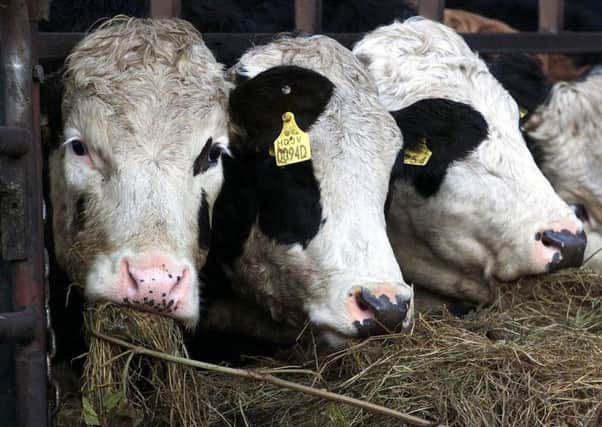Disease warning over fragmented livestock deaths records


Nine in 10 vets who specialise in livestock carry out their own post-mortems, the British Veterinary Association said, and only a small proportion of the results of their examination are being included in national databases used to monitor disease outbreaks.
The alarm comes after a survey of BVA members revealed a large scale change in where post mortems are carried out following the closure of some laboratories in the Animal and Plant Health Agency surveillance network.
Advertisement
Hide AdAdvertisement
Hide AdThere was a 31 per cent increase in vets carrying out their own post mortems in 2014, the survey results suggest, and most vets kept the resulting data at their practice. Less than five per cent of vets inputted these records it into a national system, and less than one per cent to a benchmarking group.
The survey results come six months after the Environment Secretary Elizabeth Truss promised that vast data reserves from the Department for Environment, Food and Rural Affairs will be made freely available to the public to transform the world of food and farming in “the single biggest government data giveaway the UK has ever seen”.
The BVA wants a more sophisticated way of compiling national records of causes of livestock deaths to be part of this “data revolution”.
Sean Wensley, the BVA’s president, said: “We have heard a lot about big data and its positive uses economically and socially. Disease surveillance could be a shining example of where big data and innovative data capture comes into its own.
Advertisement
Hide AdAdvertisement
Hide Ad“In a global world, where diseases such as Schmallenberg and bluetongue can emerge in our livestock without having previously been seen on these shores, being able to quickly join up the dots of disparate disease data is vital.”
Mr Wensley added: “We understand that Defra and APHA must make difficult choices due to economic pressures and we very much welcome research already utilising post mortem data such as the Agriculture and Horticulture Development Board’s Fallen Stock Project.
“What we now need is clear communications and guidance on carcase collection and access to post mortem examination arrangements together with a determination to see this as an opportunity to innovate, exploring how digital technology can help vets in the field record and capture data that feed into national databases and help us to see the bigger picture.”
The Animal and Plant Health Agency runs a laboratory and post-mortem centre at Thirsk.
Advertisement
Hide AdAdvertisement
Hide AdA spokesperson said: “APHA works in partnership with vets and the livestock industry to gather information from post mortems and other diagnostic tests to provide a more comprehensive disease surveillance service. This means we have a more detailed and earlier understanding of new and emerging disease threats. APHA collates all results submitted in a single database, which is then analysed and that information shared with vets, on APHA’s website and published in the veterinary media.
“Diagnostic and post mortem information from vets is one of the foundations of effective animal disease surveillance and APHA urges livestock vets to submit information to help build a comprehensive picture of animal disease threats.”